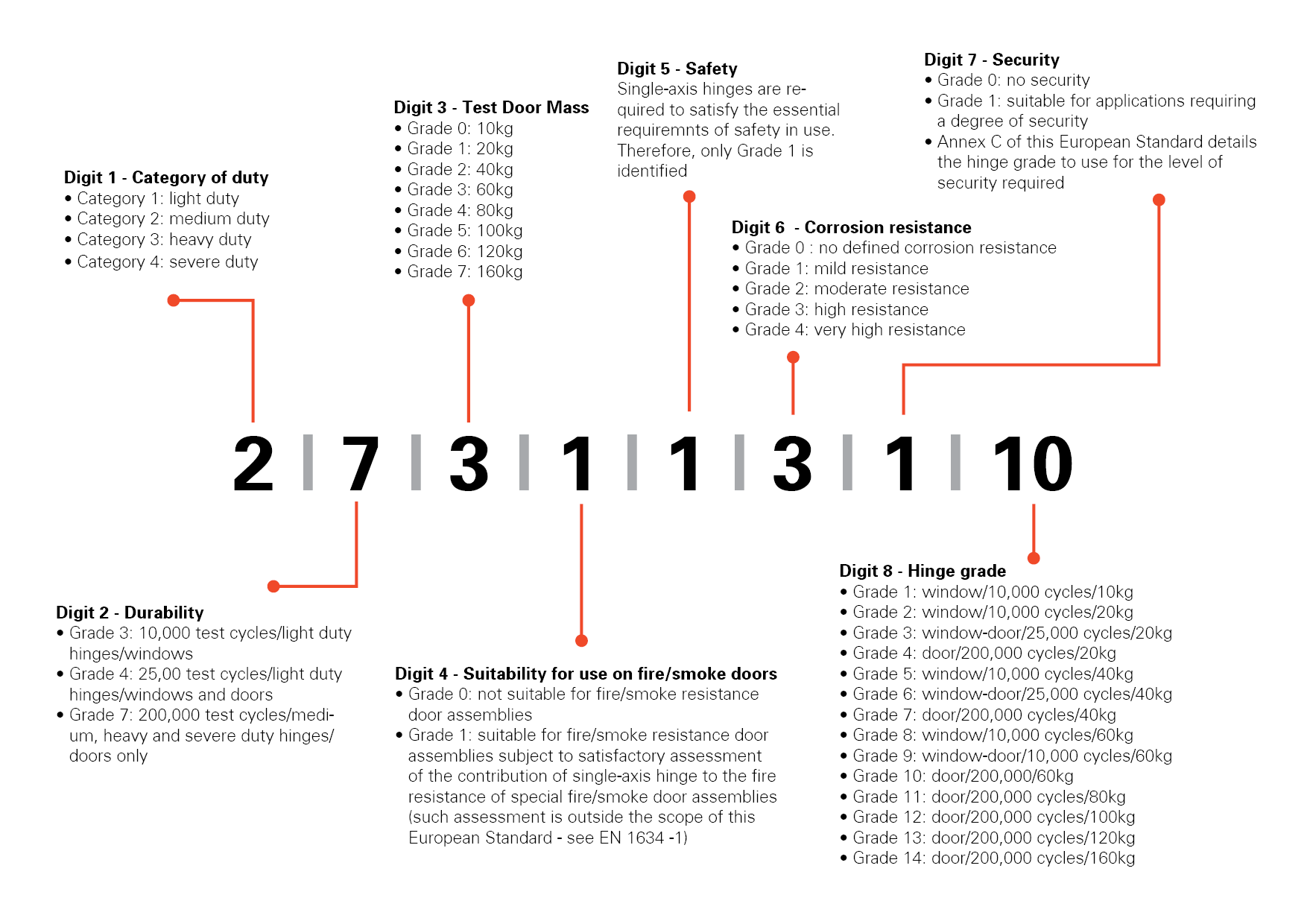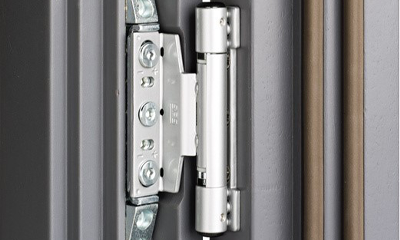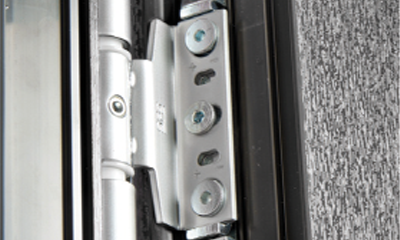Written by Callum Thornton, Hinge Technology - Product Manager at SFS Group Fastening Technology Ltd.
BS EN 1935:2002 Building Hardware. Single Axis hinges. Requirements and test methods uses an eight-digit classification system to describe a hinge's performance, based on the results of product testing. Other building hardware covered by European standards is classified in a similar way, allowing specifiers to select complementary building hardware product standards, to suit a project's needs.
Technical data sheets for all SFS hinges show the hinge classification, and this blog post can be used as a guide to better understand what each of the eight digits means.
For a broader overview of hinge standard's performance requirements, including Part Q of the Building Regulations and Secured by Design, you can read our separate blog post on Testing and Accreditations.
The grade refers to the number of test cycles up to which the hinge is tested, as follows:
What are the eight digits in BS EN 1935:2002 classifications for single axis hinges?
BS EN 1935:2002 Building Hardware. Single Axis hinges. Requirements and test methods uses an eight-digit classification system to describe a hinge's performance, based on the results of product testing. Other building hardware covered by European standards is classified in a similar way, allowing specifiers to select complementary building hardware product standards, to suit a project's needs.
Understanding BS EN 1935 Single-Axis Grades
Technical data sheets for all SFS hinges show the hinge classification, and this blog post can be used as a guide to better understand what each of the eight digits means.
For a broader overview of hinge standard's performance requirements, including Part Q of the Building Regulations and Secured by Design, you can read our separate blog post on Testing and Accreditations.
Classification Digit 1 - Category of Duty
Annex A of BS EN 1935 identifies four typical applications of hinge grades. The first digit corresponds to one of the four categories/grades given.- Category/grade 1: light duty
- Category/grade 2: medium duty
- Category/grade 3: heavy duty
- Category/grade 4: severe duty
Classification Digit 2 - Durability
Three grades are defined for durability, and the second digit of the classification corresponds to the relevant tested grade. Grade 3 and 4 apply to hinges intended for use with windows only, while grades 4 and 7 apply to hinges intended for doors.The grade refers to the number of test cycles up to which the hinge is tested, as follows:
- Grade 3: 10,000 cycles
- Grade 4: 25,000 cycles
- Grade 7: 200,000 cycles
Classification Digit 3 - Test Door Mass
The third digit refers to the mass of the door with a single axis hinge on which the hinge is tested. There are eight different grades, from 0 to 7, as follows:- Grade 0: 10kg
- Grade 1: 20kg
- Grade 2: 40kg
- Grade 3: 60kg
- Grade 4: 80kg
- Grade 5: 100kg
- Grade 6: 120kg
- Grade 7: 160kg
Classification Digit 4 - Suitability for use on Fire/Smoke Doors
Fire and smoke compartmentation doors must match the fire resistance of walls separating different areas of a building. Preventing the spread of fire to adjacent compartments requires hardware that contributes to the performance of the doorset as a whole.The fourth digit of the classification indicates either grade 0 or grade 1, depending on whether the hinge is suitable for use on the fire doors/smoke doors.
- Grade 0: not suitable
- Grade 1: suitable, subject to satisfactory assessment of the hinges' contribution to the fire resistance of the assembled doorset. Details of such an assessment can be found in BS EN 1634-1.
Classification Digit 5 - Safety
Only a single grade is given for this area of performance. A hinge must demonstrate the essential requirements for being safe in use, and therefore meets grade 1. The fifth digit is therefore a 1.Classification Digit 6 - Corrosion Resistance
Corrosion resistance is defined in BS EN 1670, and the sixth digit of a hinge classification corresponds to one of those five grades, as follows:- Grade 0: no defined corrosion resistance
- Grade 1: mild resistance
- Grade 2: moderate resistance
- Grade 3: high resistance
- Grade 4: very high resistance
Classification Digit 7 - Security
For this 'burglar resistant' component, two grades of security are identified and the seventh digit classified accordingly.- Grade 0: not suitable for burglar resistant door assemblies
- Grade 1: suitable for burglar - resistant assemblies, subject to satisfactory assessment of the contribution made
Where hinges are likely to be subject to potential persistent violent attack, grade 12 and 14 should be used because their greater load bearing capacity means they have thicker flaps and pins.
Classification Digit 8 - Hinge Grade
BE EN 1935 identifies fourteen different grades of hinge. Confusingly, this can mean the eighth 'digit' of a hinge's classification is actually a double-digit number. The fourteen grades are as follows:- Grade 1: window/10,000 cycles/10kg
- Grade 2: window/10,000 cycles/20kg
- Grade 3: window-door/25,000 cycles/20kg
- Grade 4: door/200,000 cycles/20kg
- Grade 5: window/10,000 cycles/40kg
- Grade 6: window-door/25,000 cycles/40kg
- Grade 7: door/200,000 cycles/40kg
- Grade 8: window/10,000 cycles/60kg
- Grade 9: window-door/10,000 cycles/60kg
- Grade 10: door/200,000 cycles/60kg
- Grade 11: door/200,000 cycles/80kg
- Grade 12: door/200,000 cycles/100kg
- Grade 13: door/200,000 cycles/120kg
- Grade 14: door/200,000 cycles/160kg
About SFS Dynamic Hinges
The performance of windows and doorsets hangs, quite literally, on the hinges. Any movement over time has a knock-on-effect on the rest of the window or doorset, so SFS Dynamic hinges feature the best possible design and engineering to deliver a true 'fit and forget' product.Developed specifically for the UK market, the Dynamic 2D hinge range takes into account security, adjustability, long service life and reliability without compromising on aesthetics.
Installers use SFS hinges with confidence, knowing they won't be called back to a project, and homeowners get long-lasting, high-quality performance thanks to the flawless operation.
Visit SFS Hinge Technology for more information and/or download brochures and resources.

 English (Canada)
English (Canada)
 čeština (Česká republika)
čeština (Česká republika)
 magyar (Magyarország)
magyar (Magyarország)
 Deutsch (Deutschland)
Deutsch (Deutschland)
 eesti (Eesti)
eesti (Eesti)
 español (España)
español (España)
 português (Portugal)
português (Portugal)
 English
English
 suomi (Suomi)
suomi (Suomi)
 français (France)
français (France)
 italiano (Italia)
italiano (Italia)
 Nederlands (Nederland)
Nederlands (Nederland)
 norsk, bokmål (Norge)
norsk, bokmål (Norge)
 polski (Polska)
polski (Polska)
 svenska (Sverige)
svenska (Sverige)
 Türkçe (Türkiye)
Türkçe (Türkiye)





